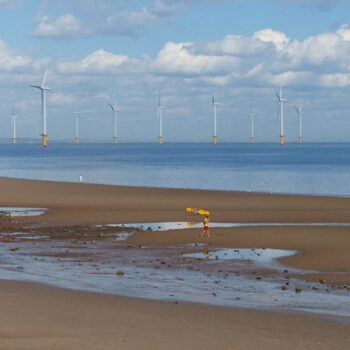The new long-term climate strategy for the EU can be a tool for a prosperous zero-carbon society if it addresses Just Transition.
In March this year, Heads of State and Government tasked the European Commission to produce a long-term climate strategy for the EU in accordance with the Paris Agreement. The Commission is expected to come forward with a vision, a menu of options that includes full decarbonisation by 2050 at the latest and hopefully robust impact assessments this week, before the UN climate talks in Poland.
After the communication of the draft strategy, the European Commission, Parliament, governments and even non-state actors will have a chance to transform it into an effective tool for a Just Transition to a decarbonised society, through the following five benchmarks:
1. The strategy gives a clear sense of direction.
Clarity on time frames and ambition levels gives planning security. It helps European Member States, regions and local communities as well as industries and workers decide where investments risk becoming stranded or where opportunities from economic modernisation might arise.
Early alignment with the goals of the Paris Agreement is thus key for two reasons: First, compliance. Europe needs to set emission targets for 2030 and 2050 that are in line with the 1.5°C goal that the EU committed to with the ratification of the Paris Agreement. Second, greater scope for action. The recently published special report of the IPCC has underscored the urgency of limiting warming to below 1.5°C. Ambitious early action ensures that the transition process takes place within a time frame when the impacts and costs of climate change are still manageable.
2. The strategy triggers a process to map transition trajectories for sectors and regions.
Decarbonisation by 2050 requires the transition of all sectors with wide ranging impacts on European regions. While some might still consider different decarbonisation pathways, the strategy should set expectations that all sectors develop decarbonisation plans. This helps to identify changing markets, define innovation needs and guide capital allocation decisions of investors towards a managed transition. To help communities adapt to climate change, the strategy should also trigger a process on how to close knowledge gaps regarding climate impacts.
3. The strategy uses a definition of Just Transition that seeks to mitigate negative impacts from decarbonisation and climate change and to reap the opportunities from decarbonisation.
Fair balancing of all interests across society requires a Just Transition framework that mitigates the impacts on communities and workers from climate policy and climate change and that maximises opportunities related to a zero-carbon future.
This needs to be based on the understanding that a transition is only just if it is fast enough to avoid dangerous climate impacts which often affect the most vulnerable in society. A proactive definition can also help identify synergies from parallel social and economic transformation processes – across decarbonisation, digitisation or automation.
4. The strategy identifies a critical EU role in enabling regions and sectors to design and implement a transition.
The strategy sets out how a successful Just Transition is composed of joint efforts from EU, Member States and local stakeholders. Despite limited competencies in policy fields instrumental for Just Transition, such as social policy, the EU has options to facilitate national and local transition processes. For example, the permanent stakeholder dialogues set up under the Energy Union Governance, the integrated national energy and climate plans and the national long-term strategies provide venues for the Commission to encourage transition processes.
It is the role of Member States then to put in place policies that catalyse transition, such as coal phase-out plans, and to anticipate disruptive social impacts. Specific transition strategies, such as the Action Plan for the post-coal development of the Upper Nitra region in Slovakia that is currently in development, benefit from being driven by local stakeholders and adapted to local needs.
5. The strategy identifies types of support needed for a Just Transition.
Achieving a Just Transition of sectors and regions requires long-term planning associated with substantial resource needs, including funding, data, technology or best practice. The long-term strategy can identify the types of support needed as well as the actors that could play a role in providing it, such as EU and national institutions responsible for economic and regional policy, education and skills or research and innovation. The strategy can show how the post-2020 EU budget can best support a Just Transition, including by aligning with the long-term strategy’s objectives.
The Coal Regions in Transition Platform plays an important role in determining support needs in cooperation with regions. As more sectors embark on a transition, the Platform will need to move beyond its current focus on coal to include for example transport and agriculture.


